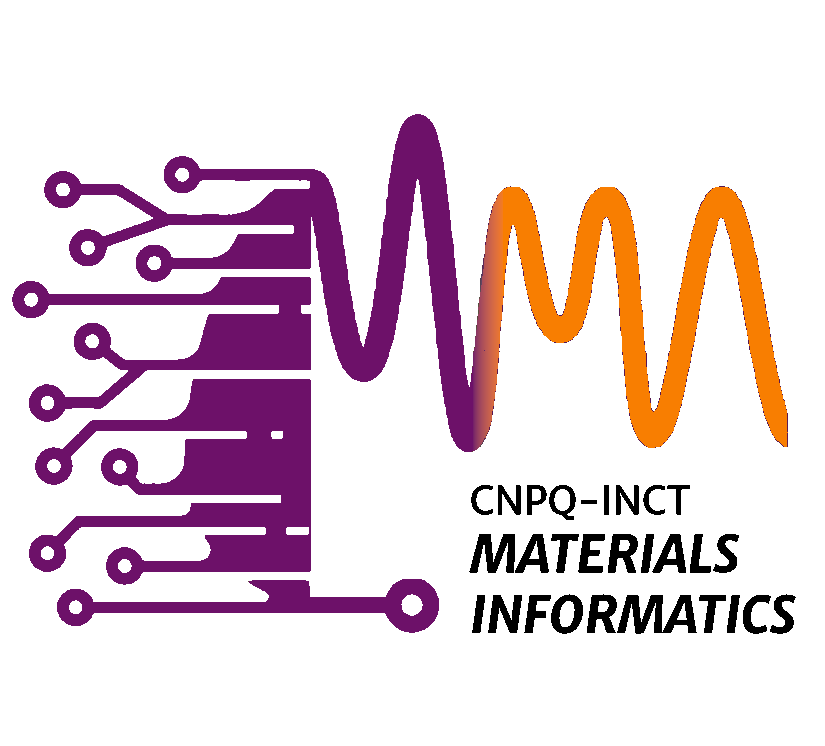
Publicações de Rodrigo Capaz
Benatto, Leandro; Mesquita, Omar; Pacheco, Kaike R. M.; Roman, Lucimara S.; Koehler, Marlus; Capaz, Rodrigo B.; Candiotto, Graziâni TMM−Sim: A Versatile Tool for Optical Simulation of Thin−Film Solar Cells Journal Article Em: Computer Physics Communications, pp. 109206, 2024, ISSN: 0010-4655. Resumo | Links | BibTeX | Tags: Optical Simulation, Refractive index, Software, Solar cell, Transfer matrix method Benatto, Leandro; Mesquita, Omar; Roman, Lucimara S.; Koehler, Marlus; Capaz, Rodrigo B.; Candiotto, Graziâni RI−Calc: A user friendly software and web server for refractive index calculation Journal Article Em: Computer Physics Communications, vol. 298, pp. 109100, 2024, ISSN: 0010-4655. Resumo | Links | BibTeX | Tags: Absorption coefficient, Kramers−Kronig, Lorentz oscillator model, Refractive index2024
@article{BENATTO2024109206,
title = {TMM−Sim: A Versatile Tool for Optical Simulation of Thin−Film Solar Cells},
author = {Leandro Benatto and Omar Mesquita and Kaike R. M. Pacheco and Lucimara S. Roman and Marlus Koehler and Rodrigo B. Capaz and Graziâni Candiotto},
url = {https://www.sciencedirect.com/science/article/pii/S0010465524001292},
doi = {https://doi.org/10.1016/j.cpc.2024.109206},
issn = {0010-4655},
year = {2024},
date = {2024-04-16},
urldate = {2024-01-01},
journal = {Computer Physics Communications},
pages = {109206},
abstract = {The Transfer Matrix Method (TMM) has become a prominent tool for the optical simulation of thin−film solar cells, particularly among researchers specializing in organic semiconductors and perovskite materials. As the commercial viability of these solar cells continues to advance, driven by rapid developments in materials and production processes, the importance of optical simulation has grown significantly. By leveraging optical simulation, researchers can gain profound insights into photovoltaic phenomena, empowering the implementation of device optimization strategies to achieve enhanced performance. However, existing TMM−based packages exhibit limitations, such as requiring programming expertise, licensing fees, or lack of support for bilayer device simulation. In response to these gaps and challenges, we present the TMM Simulator (TMM−Sim), an intuitive and user−friendly tool to calculate essential photovoltaic parameters, including the optical electric field profile, exciton generation profile, fraction of light absorbed per layer, photocurrent, external quantum efficiency, internal quantum efficiency, and parasitic losses. An additional advantage of TMM−Sim lies in its capacity to generate outcomes suitable as input parameters for electro−optical device simulations. In this work, we offer a comprehensive guide, outlining a step−by−step process to use TMM−Sim, and provide a thorough analysis of the results. TMM−Sim is freely available, accessible through our web server (nanocalc.org), or downloadable from the TMM−Sim repository (for Unix, Windows, and macOS) on GitHub. With its user−friendly interface and powerful capabilities, TMM−Sim aims to facilitate and accelerate research in thin−film solar cells, fostering advancements in renewable energy technologies.},
keywords = {Optical Simulation, Refractive index, Software, Solar cell, Transfer matrix method},
pubstate = {published},
tppubtype = {article}
}
@article{BENATTO2024109100,
title = {RI−Calc: A user friendly software and web server for refractive index calculation},
author = {Leandro Benatto and Omar Mesquita and Lucimara S. Roman and Marlus Koehler and Rodrigo B. Capaz and Graziâni Candiotto},
url = {https://www.sciencedirect.com/science/article/pii/S0010465524000237},
doi = {https://doi.org/10.1016/j.cpc.2024.109100},
issn = {0010-4655},
year = {2024},
date = {2024-01-26},
urldate = {2024-01-01},
journal = {Computer Physics Communications},
volume = {298},
pages = {109100},
abstract = {The refractive index of an optical medium is essential for studying a variety of physical phenomena. One useful method for determining the refractive index of scalar materials (i.e., materials which are characterized by a scalar dielectric function) is to employ the Kramers−Kronig (K−K) relations. The K−K method is particularly useful in cases where ellipsometric measurements are unavailable, a situation that frequently occurs in many laboratories. Although some packages can perform this calculation, they usually lack a graphical interface and are complex to implement and use. Those deficiencies inhibit their utilization by a plethora of researchers unfamiliar with programming languages. To address the aforementioned gap, we have developed the Refractive Index Calculator (RI−Calc) program that provides an intuitive and user−friendly interface. The RI−Calc program allows users to input the absorption coefficient spectrum and then easily calculate the complex refractive index and the complex relative permittivity of a broad range of thin films, including of molecules, polymers, blends, and perovskites. The program has been thoroughly tested, taking into account the Lorentz oscillator model and experimental data from a materials' refractive index database, demonstrating consistent outcomes. It is compatible with Windows, Unix, and macOS operating systems. You can download the RI−Calc binaries from our GitHub repository or conveniently access the program through our dedicated web server at nanocalc.org.},
keywords = {Absorption coefficient, Kramers−Kronig, Lorentz oscillator model, Refractive index},
pubstate = {published},
tppubtype = {article}
}
Orientados e Supervisionados por Rodrigo Capaz

Alysson Alves Pinto
Vínculo: Iniciação Científica
Instituição: Centro Nacional de Pesquisa em Energia e Materiais (CNPEM)
Laboratório: LNNano
Projeto: Avaliação via primeiros princípios da liga TMD Mo0,5W0,5Se2 encapsulada por nitreto de boro hexagonal para aplicações em spintrônica e computação quântica. (CNPq)

